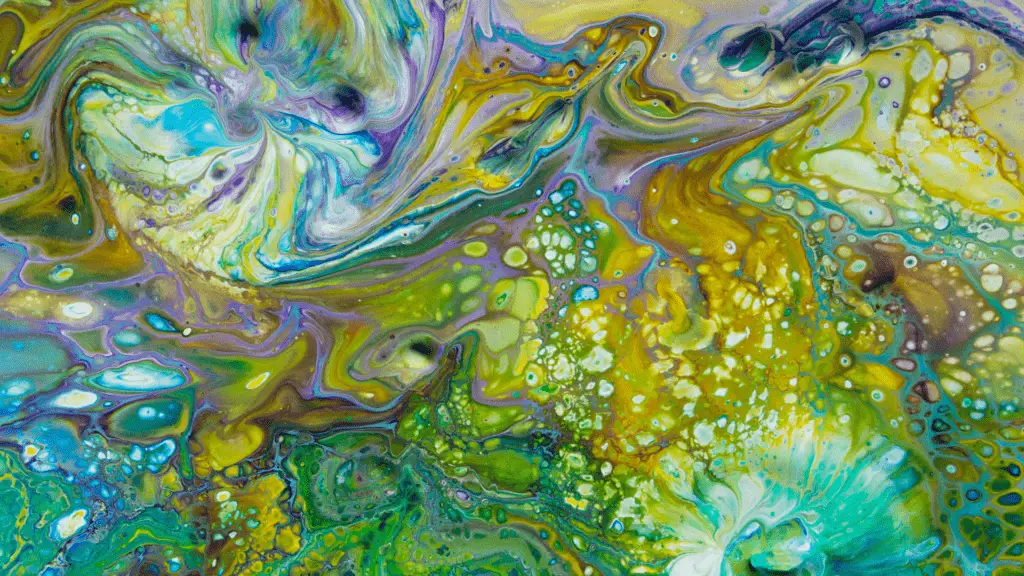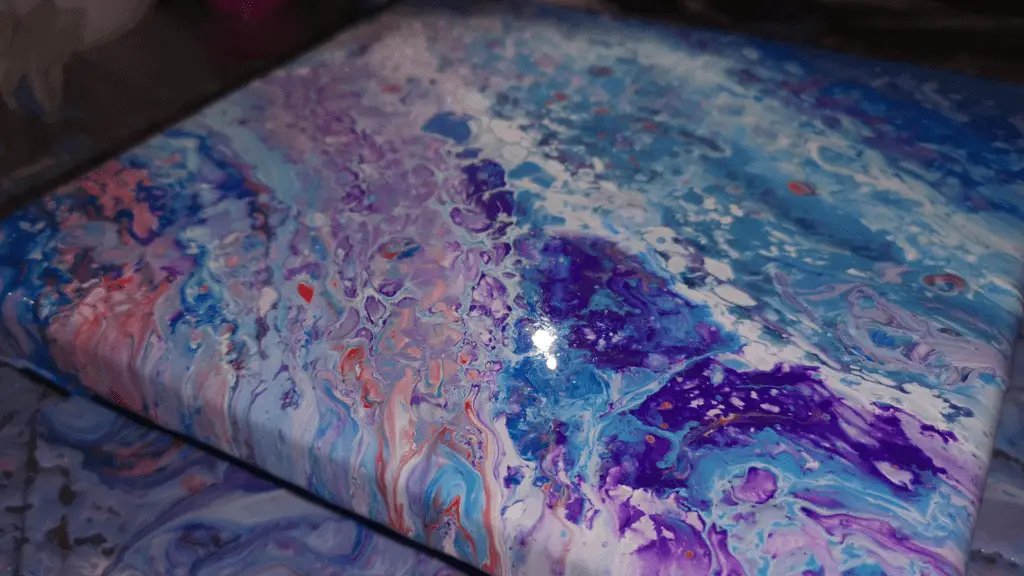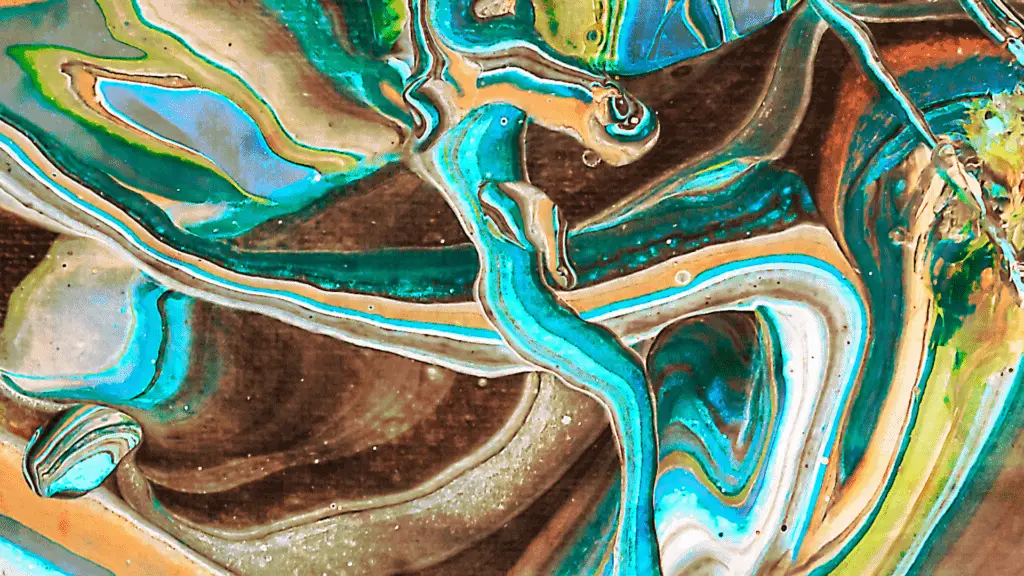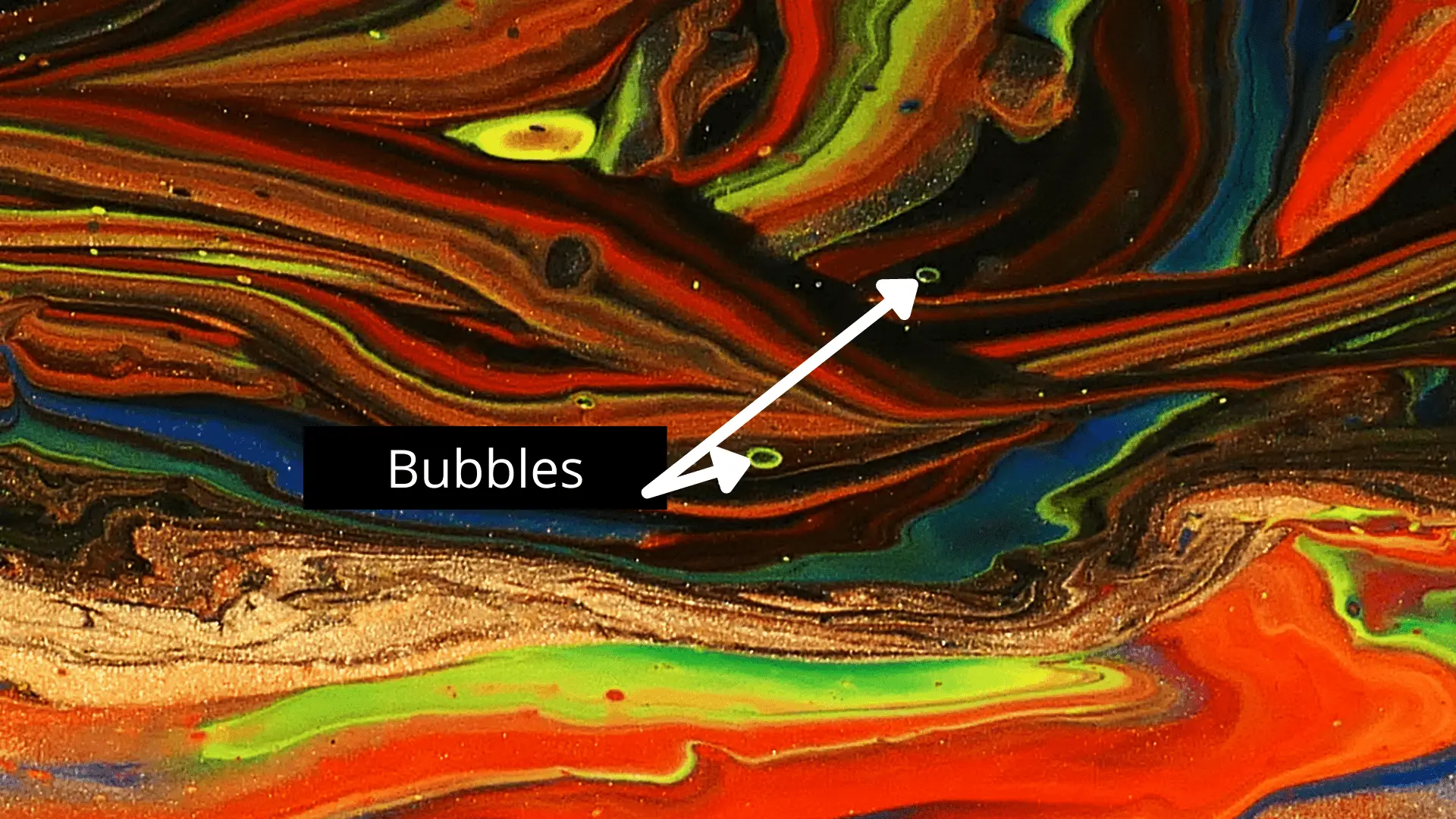Most of us have seen those pesky bubbles on the paintings. They are of course annoying and cause dents or blisters on the canvas. We can see those bubbles, especially in acrylic pour art and maybe in acrylic paintings you do with a brush on the canvas.
Bubbles on acrylics paints occur when air is trapped inside the paint by vigorously mixing paint, using cheap acrylic paints, the composition of the painting mix, and the humidity of the environment. You can get rid of them using a toothpick, blow torch, heat gun, or mixing dish soap water with paint.
There are many ways you can fix bubbling. It all depends on the type of painting you are doing.
What causes tiny bubbles in paint?

We all know less dense medium always comes to the surface. As an example when we mix oil and water, oil always comes to the surface. Just like this if we mix anything less dense than the paint itself, it comes to the surface.
Mixing vigorously
When you mix or pour your paintings vigorously or pour from high up, you incorporate air into them. You will see the bubbles in the mixture itself. If you try to do the acrylic pouring with this paint, the bubbles will come to the surface. When the painting is dry it will cause cells that we do not intend to make.
Not having the right consistency
Also if your painting is not in the right consistency, meaning, the painting mixture is too thick causes bubbles. It usually occurs in pouring art. Unlike with thin paint, It is harder for air to escape thick paint. Also, the paint will dry quickly and make it even harder for bubbles to escape. So while you keep your painting dry, bubbles will pop one by one. There will be quite a lot of bubbles.
If you are painting on canvas with a brush, make sure you let your whole paint dry, before applying any top coating. If not, it may also make bubbles on canvas. Using very thinned paintings on canvas can also cause bubbles.
Mixing additives

If you are mixing silicone to get the cells in pour paints it can cause texture on the canvas. This is because silicone is thicker than your paint and also less dense meaning it is lighter than the paint. So it tries to come to the surface of the painting, causing all the cells and texture on the painting. It will also cause bubbles on the surface.
Moisture related problems
Humidity can also cause bubbles. If you paint wood, wall, or any craft in a humid environment, it will cause blisters on the surface. The moisture will try to come through the painting, especially if you are trying to paint the bathroom or the laundry. It can occur if you have painted on a wet surface. Blisters can appear when there is rain or due.
Basically, if you happen to paint a wet surface or wet a painted surface like a wall, then the moisture will cause blisters. This is moisture trying to escape the surface and not necessarily air bubbles.
How do prevent acrylics from getting bubbles?
Acrylic pouring requires mixing the poring medium and the paint, causing bubbles. The bubbles can be prevented by stirring the paint mix very slowly for a long period of time and mixing water with a bit of very diluted dish soap water. Adding flow aid to the mix also yields better results.
Make sure you do not shake your paint. If you do let it sit for at least an hour or overnight. You can also mix your paints before an hour of pouring. Some people use to leave the paint mix overnight. If needed you can very slightly mix the paint before painting. This way your paints have time to release the air bubbles trapped in them.
Make sure your pour paint has the right thickness. Use high-quality paint. Generally pour artists use paint: pour medium a 1: 2 ratio. The ratio is usually for medium body acrylics. If you are using artist-quality acrylic you can use even less paint.
Make sure you are not thinning down the paint too much. If any bubbles occur while you paint on canvas with a brush (not pouring) then pop the bubbles with a toothpick or a needle, then apply the top paint layer on top of it.
How do you get rid of bubbles in acrylic painting?
If you got trouble with bubbles after pouring the paint on the canvas, use a toothpick to pop them. You can also use a blow torch, heat gun, or a hairdryer to pop these out. When you are using a torch to pop the bubbles make sure you do not take the flame too close to the canvas. Because the canvas can burn.
Why is my acrylic paint not smooth?

Acrylic paints become less smooth when there are bumps on the painting usually in acrylic pour paints. These occur due to lumps in the painting mix, air bubbles, using very thick paint, Using paints with different thicknesses, and using additives like silicone. Correct paint consistency will prevent those.
I have written a whole article about the 17 pros and cons of acrylic paint. You can find all the important aspects of acrylic paint there.
How to make your painting smooth?
If you are using silicones for pouring art, then the canvas surface will not be smooth. Some people are totally okay with this textured surface. But if you are not, you can use a resin to cover the surface and make it smoother.
Also, make sure you mix the pouring medium slowly. Add only a bit of pouring medium at a time and mix it with the painting very slowly and for a long time. Do not do vigorous mixing. Ensure that you have mixed the paint to a nice even consistency and there are no lumps in it.
Make sure you strain your Floetrol. You can use a used stocking over the bottle opening or a strainer to strain any lumps. You can also mix only the paints with the same thickness if you want to avoid the textured surface of the pouring art.
Always use quality paints. Make sure your painting mix has the right consistency. If your paint is very thick, it will cause deformations and tiny pocket-like structures on paintings.
I have written an article series about common acrylic paint questions and answers: part 1 and part 2. You can find answers to questions like this in the articles even before you face them.
Conclusion
Bubbles are an annoying thing we see in our paintings. Especially in acrylic pour art. Some don’t even mind the texture or the bubbles on their canvas. However, if you mind them, make sure you do not incorporate too much air in the paint mix. Also, make sure you do not use additives that can cause texture like silicone. Low-quality thick paints can also cause bubbles. To get rid of those bubbles you can touch them, use a hot air gun, or pop them with a toothpick.
Also, moisture causes the painting surface to blister such as a wet wall. Make sure you paint on a dry surface and when there is less humidity.

